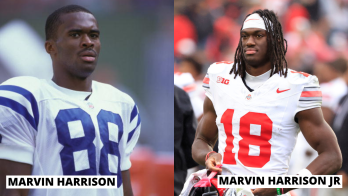After the Civil War many African –Americans migrated west to the Dallas in search of employment opportunities, particularly, in the city’s train yards. Many others ,in an attempt to find ways to sustain themselves, built small rural agricultural communities outside the Dallas area. As the area began to grow and the impact of the industrial boom was felt, more and more African Americans came to Dallas in search of opportunities. By the 1950s, African-Americans had been “redlined” into certain sections of the city, primarily in South Dallas and sections of the Oak Cliff area. However, as a result of and after forced desegregation which was brought on by the Civil Rights era, most Anglo-Americans abandoned Oak Cliff leaving to become home to a large portion of African-Americans.
The following are some of the more known early African-American communities in the area:
Bear Creek (Irving)
The oldest known African-American community in “Black Dallas. It was, founded by former slaves, in Dallas County and is actually located in the city of Irving. Jim Green, a former slave, bought land near Bear Creek in the 1850s. In the 1880s, Jim Green established a mission and helped build a one-room freedom school that later held as many as 80 students, at a time. By 1900, nine black families owned land in Bear Creek. The Jackie Townsell Bear Creek Heritage Center at Bear Creek Heritage Park is part of the City of Irving’s Parks and Recreation. It is named after the city’s first Black City counsel member and Bear Creek resident. Many of the area’s original homes still stand, however, most of Bear Creek is surrounded by development.
Freedman’s Town/Tenth Street Historic District (Oak Cliff)
This district is the oldest, relatively, intact Freedmen’s Town in Dallas, with many of its original buildings still standing. The district was a starter neighborhood for African-Americans, soon after Emancipation and is roughly bounded by E. Clarendon, S. Fleming, IH-35E., E. 8th, Eastern end of Church, E. 9th, and Plum Streets. Most of the remaining historic houses were built between 1890 and the early 1940’s in various folk designs: shotgun, double shotgun, and camel back. These modest houses are examples of the skill of Black crafts people., roughly bounded by E. Clarendon, S. Fleming, IH-35E., E. 8th, eastern end of Church, E. 9th, and Plum streets.
Freedman’s Town (North Dallas)
Freedman’s Town was created immediately after Emancipation, as a separate settlement adjacent to the town of Dallas, but still well outside its limits so as to escape harsh vagrancy laws specifically targeting freedmen. By the close of Reconstruction, when it was incorporated into Dallas proper, Freedman’s Town contained, at least, 500 citizens. By the late 19th century, the area was known as the North Dallas Freedman’s Town. The name of the community has been changed. Originally known as Freedman’s Town, by the early twentieth century, it was more commonly known to it’s own inhabitants as North Dallas and later still, the “State-Thomas” Neighborhood, which was incorporated into the city of Dallas at the close of Reconstruction in 1874.
Deep Ellum
The area was settled as a “freedmen’s town” by former slaves after the Civil War; its location on Elm Street, just east of the Houston and Texas Central tracks near the depot, was too far from downtown Dallas to be desirable. The area was called Deep Elm or as early residents pronounced it, “Deep Ellum.” Because of the proximity of the railroad, it was ,also, ,called Central Track. Entertainment was an important part of the business of Deep Ellum,as a result, it became a Mecca for Jazz and Blues artists. In 1920, twelve nightclubs, cafes, and domino parlors were open in Deep Ellum, and by 1950, the number had grown to twenty. Many famous Jazz and Blues musicians played in the Deep Ellum, helping to solidify the areas music history, such legends including Blind Lemon Jefferson and Sam “Lightnin” Hopkins. Huddie “Leadbelly” Ledbetter began performing in 1920 in Deep Ellum, before he began his career in Greenwich Village in New York. By 1991, Deep Ellum had become popular as a nightspot for young urban dwellers and had fifty-seven bars and nightclubs.
Hamilton Park: A Planned Black Community in Dallas
World War II (1939-1945) brought staggering changes to Dallas, as the city became a banking, commercial, and transportation center. While, the end of the war brought economic opportunity to some African-American families who for the first time in their lives could afford better living conditions, the growing population strained available housing and put increased pressure on already overcrowded African-American neighborhoods. Both African-American and Anglo-American citizens of Dallas worked together to create a thriving African-American planned community – Hamilton Park.
This movement by Dallas’ African –Americans to obtain decent housing fit into the broader context of rapid postwar growth in the United States and matched the struggles of African-Americans throughout the nation. As in other cities in the South, African-Americans in Dallas were faced with the dilemma of identifying and procuring a suitable tract of land — one large enough, near African-American employment and far enough from Anglo-American neighborhoods that the development would not be opposed. Likewise, certain challenges confronted individuals who hoped to move, from procuring utilities in the new neighborhood to arranging financing for new home buyers, among others. Despite the many obstacles early planners and pioneer residents encountered, the community of Hamilton Park evolved, established civic organizations, public schools, and churches, and helped redefine the culture for Blacks in Dallas.
Important Dates in Texas History:
* 1841 – John Neely Bryan establishes a settlement on the eastern bank of the Trinity River, the site that would evolve to become Dallas.
* 1846 – Dallas County is organized and Dallas is named to serve as the temporary county seat.
* 1850 – Voters select Dallas as the permanent county seat, turning down the rival communities of Hord’s Ridge and Cedar Springs.
* 1855 – European immigrants establish the utopian community of La Reunion west of Dallas.
* 1856 – The city of Dallas is incorporated by the state.
* 1857 – La Reunion begins to disband, with many of its members relocating to Dallas.
* 1867 – Freedmen’s Bureau is established in Dallas.
* 1903 – Dallas annexes the neighboring community of Oak Cliff.
* 1905 – April 5: President Theodore Roosevelt is the first president to visit Dallas while in office.
* 1911 – Dallas became the location of one of twelve regional Federal Reserve Banks
* 1961 – Racial integration of Dallas public facilities begins.
* 1969 – George L. Allen is the first black elected to the Dallas City Council. He was appointed in 1968.
* 1995 – May 6: Ron Kirk is elected Dallas’ first black mayor.
* 1996 – Aug. 1: Dallas’ Michael Johnson wins the 200-meter dash in 19.32 seconds (world record) at the Olympics in Atlanta, becoming the first man to win the 400 and 200 at the same Olympics.
BOOKER T. WASHINGTON HIGH SCHOOL
Founded in 1922, Booker T. Washington High School for the Performing & Visual Arts was Dallas’ first African-American high school, and today is Dallas’ Arts & Magnet High School aimed at successfully combining arts and academics. Sixteen Presidential Scholars have graduated from this arts magnet high school, in addition to Grammy winning artists Erykah Badu, Roy Hargrove and Norah Jones .











